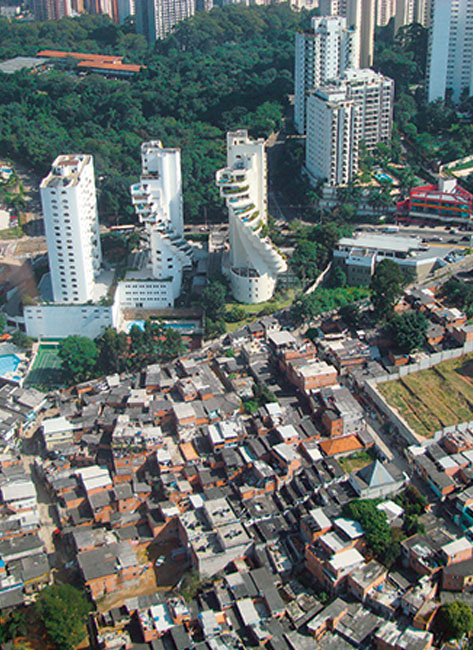The Club Idea
The Stacked Luxury of São Paulo
Abstract
A little over a century ago, São Paulo was still an insignificant provincial town in an unimportant state of the Brazilian Republic. Thanks to the cultivation of coffee and later to the strong growth of Brazilian industry, São Paulo was able to transform itself over the course of the twentieth century into the country’s economic and cultural centre – and one of the largest cities in the world. Nowadays, one out of ten Brazilians lives in the metropolis, and 20 per cent of Brazil’s GNP is generated there. The city has the greatest concentration of wealth in the country, but also harrowing poverty, social segregation and inequality.
From the nineteenth century onward, São Paulo developed so quickly that the expansion of infrastructure could not keep up with the growth of the city. Around the central zone, there arose a belt of poor districts that remained bereft of good infrastructure and facilities such as schools, healthcare, police and public greenery. Until the 1970s, São Paulo’s wealth was out of sheer necessity contained within a vigorous central area where the facilities were in good order.



